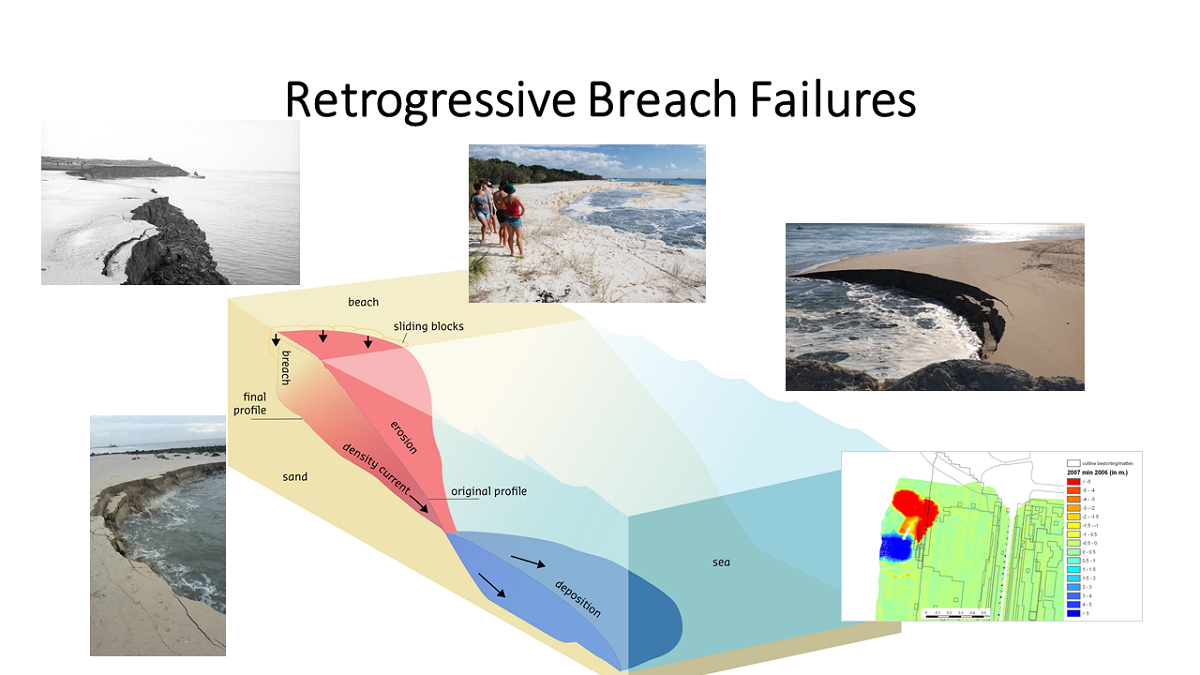Retrogressive breach failures or coastal flow slides occur naturally in the shoreface in fine sands near dynamic tidal channels or rivers. They sometimes retrogress into beaches, shoal margins and river banks where they can threaten infrastructure and cause severe coastal erosion and flood risk. Ever since the first reports were published in the Netherlands over a century ago, attempts have been made to understand the geo-mechanical mechanism of flow slides. In this paper we have established that events, observed during the active phase, are characterized by a slow and steady retrogression into the shoreline, often continuing for many hours. This can be explained by the breaching mechanism, as elaborated in this paper. Recently, further evidence has become available in the form of video footage of active events in Australia and elsewhere, often publicly posted on the internet. All these observations justify the new term ‘retrogressive breach failure’ (RBF event). The mechanism has been confirmed in small-scale flume tests and in a large-scale field experiment. With a better understanding of the geo-mechanical mechanism, current protection methods can be better understood and new defense strategies can be envisaged. In writing this paper, we hope that the coastal science and engineering communities will better recognize and understand these intriguing natural events.

